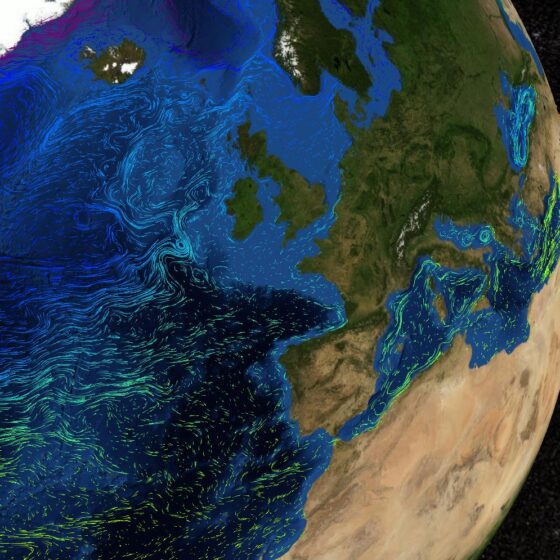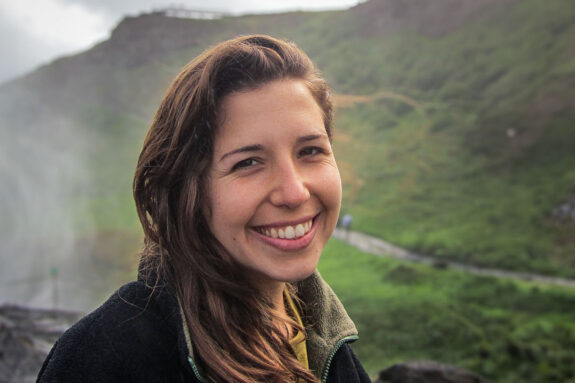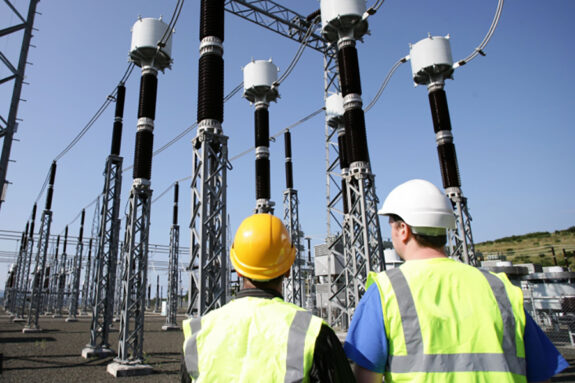Atmospheres, Oceans + Climate
- Atmospheric Chemistry + Dynamics
- Physical + Chemical Oceanography
- Carbon + Nitrogen Cycles
- Fluid Dynamics
- Synoptic Meteorology
- Tropical Meteorology
- Biosphere + Ecosystems
- Paleoclimatology
- Atmospheric Convection + Radiation
- Planetary Atmospheres
- Marine Geochemistry
- Hydrology + Geophysics
- Glaciology

The EAPS graduate Program in Atmospheres, Oceans, and Climate (PAOC) engages in some of the most intellectually challenging and important problems in science, such as the physics of hurricanes and the dynamics of ice ages. From physical and chemical oceanography, to biogeochemistry, to atmospheric dynamics and chemistry, our program emphasizes the synthesis of theoretical, observational, and modeling approaches.
Program Chair: Susan Solomon
Program Site: paocweb.mit.edu
Includes two Education Programs:
- Atmospheric Science
- Climate Science
Atmospheric and oceanic sciences and the study of climate are founded on the basic principles of physics, mathematics, biology, and chemistry. The Program in Atmospheres, Oceans, and Climate [referred to as PAOC] involves many scientific disciplines, including dynamical and chemical oceanography, biogeochemistry, atmospheric dynamics and chemistry, and geochemistry. In all areas, PAOC emphasizes the synthesis of theoretical, observational, and modeling approaches.
The Atmospheric Science Program emphasizes an integrated approach involving theory, modeling, experiments, and data analysis. Study areas include atmospheric dynamics, synoptic meteorology, atmospheric convection, dynamics of the middle atmosphere, tropical meteorology, atmospheric chemistry, and atmospheric radiation. Because of its cross-disciplinary nature, the program often includes study in mathematics and/or chemistry. Recent areas of research have included the ozone hole, the dynamics of hurricanes, adaptive sampling, and air-sea interaction.
The Climate Science Program capitalizes on the overlapping nature of the atmospheric, oceanic, and geological sciences as they relate to climate and climate change. Students have access to unique expertise in all aspects of climate including paleoclimatology and the geological record, all of atmospheric and oceanic physics and chemistry, fluid dynamical modeling of the climate system, hydrology, and geophysics. Ongoing research activities include the study of high latitude North Atlantic deep-sea cores as records of the climate of the past 200,000 years; coupled models of air-sea interaction developed in MIT’s Climate Modeling Initiative; studies of possible mechanisms of the Permo-Triassic Mass extinction; Atlantic Climate Variability; and global biogeochemical cycles.
PAOC offers students ample opportunity for complex, interdisciplinary work. For this reason, our programs are flexible and serve primarily to guide students through an organized body of study and research, but there can be considerable overlap in the courses taken by students in the different programs. Students select one of these programs, but may receive permission to move into another as their research interests develop. You can review the required and elective courses designed to address a variety of student interests.
Many of the EAPS faculty in oceanography also are active participants in and accept graduate students through the MIT/Woods Hole Oceanographic Institution (WHOI) Joint Program. WHOI, located about 70 miles south of Boston, is one of the world’s leading oceanographic research centers, with extensive laboratory facilities and an impressive fleet of research ships and submersibles operating around the world. All students may take classes at either MIT or WHOI, and much effort has been made to render communication and travel between the institutions as easy as possible.


